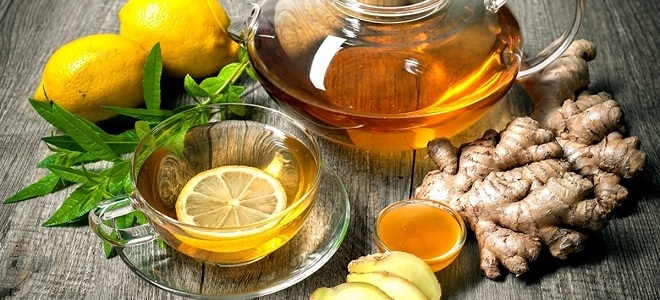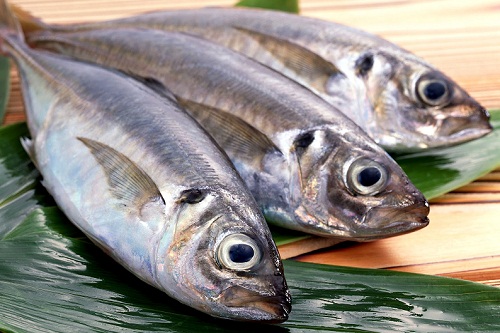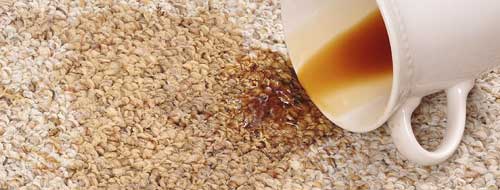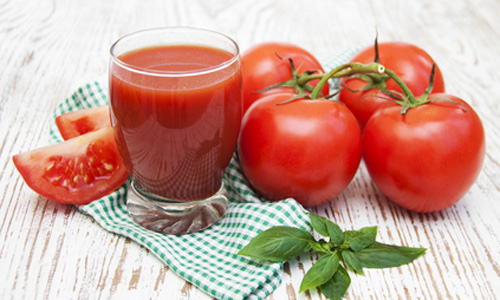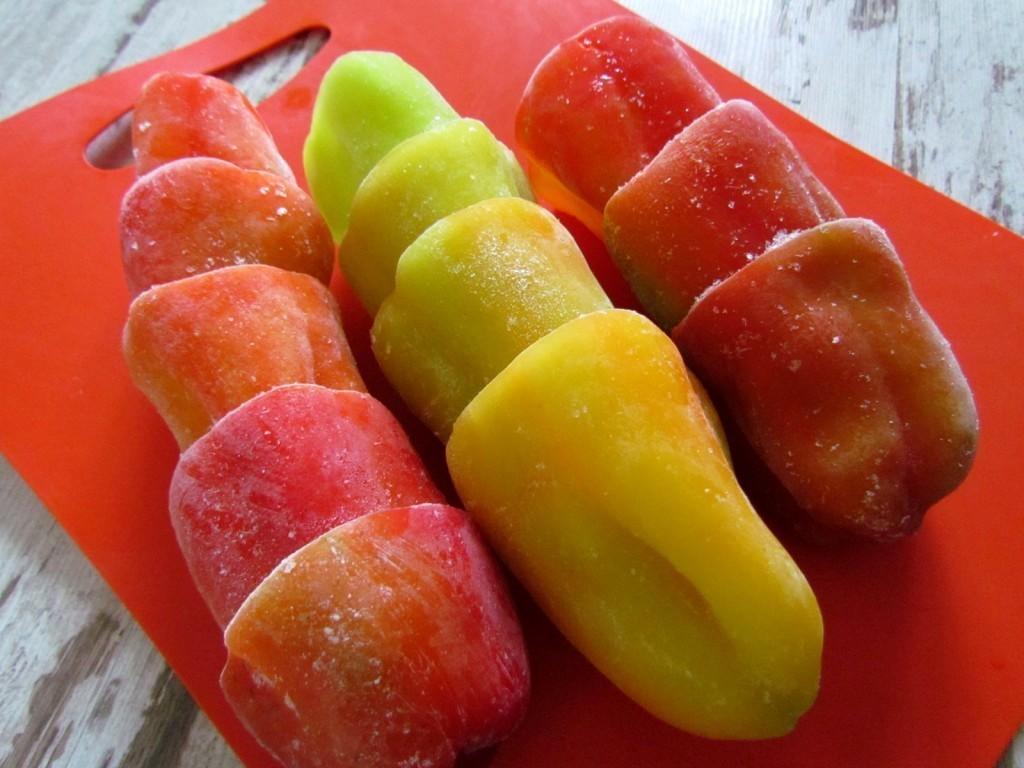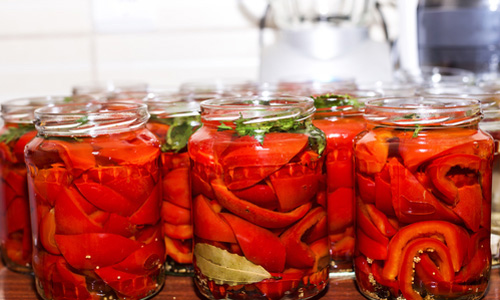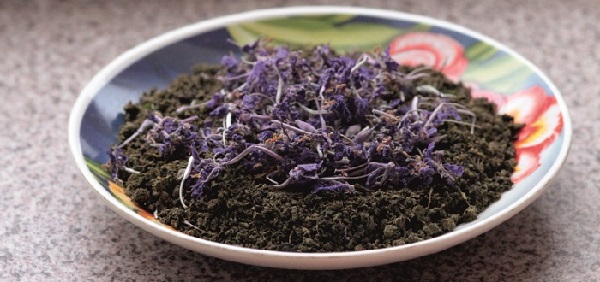El Description, composition, useful properties and contraindications
Ale
Ale is a dark, bitter-sweet alcoholic beverage made in the same way as beer, using barley malt, top-fermenting yeast and a special mixture of herbs for preservation. Now ale is produced in England, Ireland, Belgium and the USA.
Liquid bread
Until the 15th century, the word "el" was used to mean a drink similar to beer, but without the use of hops. Hops brought from Holland for preserving beer significantly changed the composition and taste of the drink, and made it possible to brew light beers. The ale production process is closest to what the ancient Sumerians, Babylonians, and Egyptians did. In the Middle Ages, ale became as necessary as water, and its property not to deteriorate for a long time and its excellent energy value glorified ale under the name "liquid bread".
origin of name
The word el (English ale) is most likely derived from the Old English ealu, but some researchers claim that it goes back to the Indo-European root alut, which means magic, intoxication or witchcraft. Perhaps there is some truth in this, especially since the composition of the ale includes a large number of herbs and spices with psychotropic, tonic and aphrodisiac effects.
Gruyt
The main difference of ale is that a fundamentally different yeast culture is used in a qualitatively different preservative. For taste balance and in order to stop the growth of microorganisms, hops are used in the production of light beers. Hop is a very good preservative, and its bitter taste equalizes the malt sweetness. For the same purpose, a special mixture of herbs and spices called gruyt is used in ale. The composition of the mixture includes wormwood, myrtle, heather, yarrow, ledum, ginger, juniper berries, caraway seeds, spruce resin, anise, cinnamon, nutmeg and honey. In the Middle Ages, gruyte was made in the form of a dry mixture, which only merchants approved by the Catholic Church had the right to sell. By the sixteenth century, gruite was banned in Germany due to a discrepancy with the "law on the purity of beer." Gruite is now used in Ireland and some English breweries.
Types of Ale
Modern ale is a dark, rather strong drink with a fruity aroma, with a contrasting bittersweet taste.
- Brown Ale is a weak (3-3.5%) ale based on dark barley malt, with a sweet taste and nutty aroma. Brewed in England since 1900.
- Scotch Ale is produced in Scotland. The color is dark due to the use of toasted malt to enhance the caramel notes in the taste.
- Mild Ale or soft ale meant previously immature ale. Now this term can mean the light brown color of the drink.
- Burton Ale is a dark, sweet and strong ale that is aged for a year or more. Due to the extreme strength in its pure form is practically not used.
- Old Ale is a seasoned English ale, which acquires a high strength and sour taste in a year.
- Belgian Ales - Belgian ales are brewed differently than English. As a rule, they are light shades and very strong due to the use in sugar production.
Varieties of ale
The ability to use instead of hops a special mixture of herbs and spices (gruyt), several types of roasting malt and long exposure allow you to achieve a taste and aromatic diversity in the production of ale. Dividing into several types, ale forms many varieties with characteristic features.
Brown ale
It is prepared only on the basis of dark roasted malt in England, Belgium and the USA since the beginning of the 20th century. Due to the complex production, this ancient type of beer almost disappeared by the beginning of the 19th century, but a century later was restored by enthusiasts from the Mann brewery. Brown Ale - an average form of ale by strength: from 3 to 4% alcohol. The taste of the drink has moderate bitterness and sweetness and varies depending on the area of \u200b\u200bpreparation. In the south of England, as a rule, Brown Ale is sweeter, lighter, with fruity notes in taste and darker color, in the northeast ale is more light-colored and strong with chocolate shades of taste. In the United States, ales are prepared that have a dry taste with bitterness due to the use of hops in the production.
Mild ale
Ale with a pronounced malt taste, with soft sweet notes, pale brown color and low strength (3-3.6% vol.). Chocolate and other dark malt and brewing sugar are used. This kind of ale appeared in England in the 17th century and was in decline by the middle of the 20th century, but thanks to the general interest in old beers, it was not forgotten, and now has more than 20 varieties of this type of ale. The term mild is used to mean young or incontinent. This is the most popular type of beer in Wales. It is known as a drink for miners.
Pale ale
This is a light type of ale, prepared on the basis of top-fermenting yeast, which distinguishes it from simple light beers (pale, light from the English word pale). The peculiarity of this type of ale is the use of hops and the ripening of beer in bottles, which gives the drink a very interesting spicy taste, for which beer lovers appreciate this type of ale.
The name old or old applies to all seasoned varieties and means seasoned. As a rule, this ale is dark or very dark brown, cooked using caramel roasted barley malt, aged for a year or more. Beer is obtained with a rich rich flavor, dark in color, often with fruity notes, with the aroma of herbs and spices. This is a strong beer with an alcohol content of 6 to 10% vol.
Burton ale
Very dark, strong, aged for more than a year. Only a few varieties are produced, the best of which are Bass No.1 and Fullers Golden Pride. The taste of this famous type of ale is distinguished by a delicate fruity flavor of apple, clover honey and pear.
Interesting Facts
A few years ago mini-breweries appeared, designed for the production of beer and ale at home. A small volume of 8 liters allows you to touch the beer production process, and special brewer's yeast from the famous English breweries helps get closer to the legendary ale varieties.
Calorie Ale
Calorie Ale - 50 kcal.
Many are interested in the question: what is real ale, and what is its difference from the usual weak alcohol? Ale drink, which is characterized by a peculiar taste and a fairly high alcohol content. The first information about the prescription composition of ale appeared in England in the 15th century, but it is worth noting that representatives of the Sumerian civilization also consumed a similar drink.
Ale is widespread on foggy Albion and is considered to be the national drink of the Irish - the ancestors of the Vikings. At present, England remains the main global manufacturer of foamy drinks (about 90 percent of the drink is produced on its territory) and in most cases, traditional ale can be drunk there.
Navigation
Ale properties: strength, calorie content
In the Middle Ages, alcoholic ale was a staple food. After all, he did not need special storage conditions and did not spoil. And due to the fact that the drink contains a fairly large amount calories (about 40 callas per 100 grams of product) he easily replaced nutritious bread. For a long time, it was believed that ale brings exclusively benefits due to the fact that it contains a lot of vitamins and other useful substances.
Indeed, in a drink prepared according to traditional technology, vitamins B and E are present, as well as minerals such as phosphorus, calcium, magnesium and potassium. Answering the question of how many degrees in this drink it should be said that its degree varies from 3 to 12 percent. A pleasant fruity aroma and a rather high percentage of alcohol make el an anti-stress drink. After all, just one glass used with pleasure in a friendly company will allow you to forget about depression and cheer up, but you still should not abuse an alcohol-containing drink.
What is the difference between ale and beer?
The wine drink is different in composition and process. In particular, the main distinguishing feature of ale prepared using traditional technology is lack of hop. This fact allows the product to cook faster and gives it a characteristic sweet taste. A unique bouquet of the drink is given by various herbs and spices present in the composition of the drink. Also, it should be noted that the cooking technology involves top fermentation at a constant temperature from 15 to 24 degrees. With this technology, during the fermentation process, the yeast is held at the top of the liquid, forming a fluffy froth. In the case of using the top fermentation method, the drink is enriched with ethers and higher alcohols, giving it a recognizable aroma and pleasant aftertaste. The ale preparation process ends with a ripening stage at a temperature of 11 to 12 degrees, while the strength of such a drink is enhanced. This process usually lasts about four weeks, but there are varieties that insist on four months.
Ale beer has quite a few varieties that differ in production technology, color and taste. Consider the most popular varieties:
- Bitter or still called bitter ale. This product is considered the national drink of the British. He owes his appearance to the fact that they began to add a small amount of hops to the cooking ale. The drink has a bitter taste and copper color.
- Pale el prepared using light malt and water from the Burton area (England). The drink has a pleasant and slightly bitter aftertaste.
- Indian pale ale was coined in India, while being a colony of Great Britain. The drink is distinguished by a large amount of hops and strength.
- Porter. The drink stands out with good taste. It combines sweetness and bitterness in the best way. In the production of this type of ale, burnt sugar and dark malt are used.
- Stout. The peculiarity of the drink is that the ingredients are pre-deep fried. Such ale has many varieties (ginger, dry, etc.).
- Brown Ale Initially, the drink was a low-alcohol beer, but later hops began to be added to it in a large volume, which characterizes its modern composition. Ale can have a variety of flavors, from hazelnut to burnt sugar.
- Rose Lychee. A special type of foamy drink, characterized by a pleasant taste and the presence of a large amount of carbon dioxide, which turns it into a sparkling product.
- Original ale "real ale". It is distinguished by the fact that it does not go through the filtration and pasteurization procedures. In this case, the drink can be stored only about a week. I must say that in this drink all the features of the English ale that have come down to us since the 18th century have been preserved.
How to drink ale?
In principle, ale is consumed in the same way as regular beer. Pour it gradually along the edge of the glass. This is required to prevent large foaming, in some cases this procedure may take about five, seven minutes. It is not worth rushing and drinking in large sips of ale, but you should not tighten too much, as the drink may run out of steam and lose its aroma. By tradition, a mug of ale is drunk in three sips with insignificant pauses. Mostly ale served at a temperature of the drink in the range from 6 to 12 degrees, but in England dark ale is customary to use warmed up. So, as they say in color and taste, there are no comrades.
 On your own, at home, you can make ginger ale, with 5 percent alcohol.
On your own, at home, you can make ginger ale, with 5 percent alcohol.
To prepare 5 liters of drink, the following ingredients will be required:
Ginger (one root).
300 grams of sugar.
1 teaspoon of yeast.
Ginger is rubbed on a grater, lemons are squeezed in the same container and the remaining ingredients are laid out. The resulting mass is poured with boiled water, cooled to a temperature of 40 degrees.
The composition is infused in a vessel with hydrolock for two days. After this, the drink is refrigerated for another 24 hours. Later, home ale can be consumed.
Ale beer harm and contraindications
Like any alcohol, ale can harm human health if abused. Also, you should not offer it to children and nursing mothers and pregnant women. Ale is a drink of alcohol and with its daily use in large quantities there is a danger of liver cirrhosis. It can also provoke beer alcoholism.
Options: OG: 1.030 - 1.035 | FG: 1.010 - 1.013 | ABV: 2.5 - 3.2% | IBUs: 10 - 20 | SRM: 9 - 17
Commercial examples:Belhaven 60 / -, McEwan 's 60 / -, Maclay 60 / - Light (all samples are barrel only, not exported to the USA)
Scottish Strong 70 / - (Heavy 70 / -) (Scottish Heavy)
Options: OG: 1.035 - 1.040 | FG: 1.010 - 1.015 | ABV: 3.2 - 3.9% | IBUs: 10 - 25 | SRM: 9 - 17
Commercialexamples: Caledonian 70 / - (Caledonian Amber Ale in the USA), Belhaven 70 / -, Orkney Raven Ale, Maclay 70 / -, Tennents Special, Broughton Greenmantle
Scottish Export 80 / - (Scottish Export 80 / -)
Options: OG: 1.040 - 1.054 | FG: 1.010 - 1.016 | ABV: 3.9 - 5.0% | IBUs: 15 - 30 | SRM: 9 - 17
Commercialexamples: Orkney Dark Island, Caledonian 80 / - Export Ale, Belhaven 80 / - (Belhaven Scottish Ale in the USA), Southampton 80 Shilling, Broughton Exciseman’s 80 / -, Belhaven St. Andrews Ale, McEwan's Export (IPA), Inveralmond Lia Fail, Broughton Merlin’s Ale, Arran Dark
Fragrance: The malt sweet is low to medium, sometimes underlined by mild to moderate caramelization in the digester. Some examples have a mild hop aroma, light fruity, low diacetyl and / or low to moderate peat odor (all of these are optional). Peat smell is sometimes felt as earthy, smoky or barely fried.
External description:Color from dark amber to dark copper. Usually very clear due to long, cool fermentation. The creamy foam is small to moderate, and has a creamy to light tan color.
Taste:The primary taste is malt, but not too strong. The initial malt sweetness is usually emphasized by mild to moderate caramelization, which occurs during cooking, and is sometimes accompanied by a low diacetyl component. Fruit esters can be moderate to nil. Low to moderate hop bitterness, but the balance always tends toward the malt (although not always significantly). Hop flavor is low to none. A low to moderate peat character is optional, and can be felt as earthen or smoky. It usually has a cereal, dry finish due to a small amount of unmalted roasted barley.
Mouthfeel: Flavor medium to low to medium. Low to moderate carbonation. Sometimes slightly velvety (creamy), but often quite dry due to the use of roasted barley.
General impression:Pure malt with a finale that becomes dry, maybe a little ethers, and sometimes quite a bit of peaty earthiness (smoke). Most samples of this beer have a rather dry finish, given its relatively sweet taste, and essentially have a balance different from strong Scottish ales.
Story: A traditional Scottish variety of session beer, which reflects local ingredients (water, malt), with less hops than English counterparts (due to the need to import hops). Prolonged, cool fermentation is traditionally used in Scottish brewing.
Ale - a type of beer that is obtained by rapid fermentation.
Unlike lager, it takes less time to make ale, and besides, ale is sweeter. The preparation of such a drink takes 3-4 weeks, some types are prepared for 4 months. Drink also changes its taste depending on the storage time. Aged for several weeks, it resembles the taste of a young beer with a sharp taste, but ale, aged several months, has a pleasant herbal flavor.
To increase the strength of ale, it is enough to store it for a month at room temperature. Beer lovers claim that such storage makes the drink even tastier.
Ale is a very ancient drink. Even the Sumerians were able to cook it, however, they did not add hops to it, and therefore it took very little time to prepare it. The first mention of the hop-ale was first found in England already in the 15th century.
The name "ale" has primitive Indo-European roots and literally means "intoxication." Before hops were brought into the territory of England, the name "el" meant drinks made by fermentation. Drinks, which included hops, were called "beer." The presence of hops has become a characteristic feature in order to separate beer from similar drinks. Hops gave the beer a pleasant bitterness, and also perfectly set off the sweetness. In the preparation of ale, gruite was originally used. It was a kind of herbal beer, which had tonic and even psychotropic properties.
In the Middle Ages, ale was very common. This is due to the fact that in those days drinking water was a very valuable product, it was obtained from rain or snow in small quantities. Water from the rivers was dangerous for consumption, as it contained a large number of dangerous microorganisms. Low-alcohol drinks, including beer, were considered a safe alternative to drinking water. Unlike other products, this beer had a long shelf life, which at that time was a very important advantage. Beer gained particular popularity in those areas where growing grapes was a problematic occupation due to the climate or soil.
It is customary to classify ale according to the type of yeast, as well as the fermentation temperature. At a standard temperature for ale of 15-24 degrees, esters are released. As a result of this production process, the drink is obtained with an original, slightly fruity taste. In its preparation, mainly barley malt is used.
 Beer ale is very common in England. This is one of the few countries where ale beer dominates, not lager. The British mostly drink draft beer, so this product is not ripened at the brewing companies, but directly in the cellar of the pub. The first British brewer is Atrektus. His name was discovered during excavations of the Roman fort, which indicates that the Romans used Celtic ale in Britain. In 1342, the London Brewers Guild appeared, which was a major event in the history of the hop drink. The founding of the London Guild marked the professionalization of the brewing industry.
Beer ale is very common in England. This is one of the few countries where ale beer dominates, not lager. The British mostly drink draft beer, so this product is not ripened at the brewing companies, but directly in the cellar of the pub. The first British brewer is Atrektus. His name was discovered during excavations of the Roman fort, which indicates that the Romans used Celtic ale in Britain. In 1342, the London Brewers Guild appeared, which was a major event in the history of the hop drink. The founding of the London Guild marked the professionalization of the brewing industry.
The UK remains the main producer of ale in the world market, accounting for about 90% of all products. Basically, traditional ale can be found in the territory of the manufacturer, buying English ale abroad is quite problematic.
How is ale different from beer?
Many hobby drink lovers often do not know how ale differs from beer.
According to accepted standards, “beer” is the general name for drinks that are obtained by fermentation of malt wort. Ale is a type of beer, but has clear production features. Ale, unlike another type of beer - lager, do not pasteurize and do not filter. The drink is first infused, and then poured into barrels. The main distinguishing feature of ale is that it produced by top fermentation. The result is a drink with a more complex aroma and taste, mostly copper-colored (see photo).

Ale is poured into small barrels, in this form it ends up in a bar. Next, a faucet is installed in the lower part of the barrel, and a small hole is left in the upper part so that air enters the barrel. The presence of air allows you to maintain the so-called "yeast cap", which, in turn, protects the drink from rapid oxidation.
To avoid oxidation, a barrel of ale must be drunk in a few days.
Types of Ale
Traditional ale is usually divided into the following types:
Bitter, or Bitter Ale, - the national English beer, it appeared due to the fact that the brewers began to add a little hops to the drink, so the taste of ale became with a light bitterness. This drink has a pleasant color of dark copper, has a refreshing taste. Bitter Fortress is in the range of 4-5%.
 Pale el - a type of ale made on the basis of light malt. Its feature is the local water of the city of Burton, in which for the first time the brewers made this drink. Burton water is rich in minerals, which could not but affect the taste of the new drink. Pale El was so fond of the local population that soon England knew about the new beer. The name of the drink is translated as “pale ale,” because its color is pale honey or golden, which distinguishes it from other types of ale. His taste is pleasant with a slight bitterness.
Pale el - a type of ale made on the basis of light malt. Its feature is the local water of the city of Burton, in which for the first time the brewers made this drink. Burton water is rich in minerals, which could not but affect the taste of the new drink. Pale El was so fond of the local population that soon England knew about the new beer. The name of the drink is translated as “pale ale,” because its color is pale honey or golden, which distinguishes it from other types of ale. His taste is pleasant with a slight bitterness.
Indian pale ale - It was coined at the end of the 18th century in India, which at that time was a British colony. Unfortunately, beer could not withstand traveling by sea. When the drink reached the coast of India, its taste was hopelessly spoiled. In this regard, brewer George Hodgson decided to add more hops to the ale, which would play the role of a natural preservative in the drink. So George Hodgins invented a new strong hop-ale, which finally endured a sea trip without loss for taste. Such a drink was called "India Pale Ale", it is stronger than other types of aleToday it is produced in Burton and in London.
Porter - The drink appeared in the 18th century as an alternative to traditional ale. Porter owes his appearance to Ralph Harwood, who began to use dark malt and burnt sugar for beer production. Beer had a light taste, which harmoniously combined sweetness and bitterness. The drink got its name due to the fact that it was very fond of London porters “porters”. Beer strength is 4.5-10%.
 Stout - a kind of porter, refers to the type of ale. Ireland is considered the birthplace of the stout. Stout is a beer with a characteristic bitterness. Its taste and color is due to the high degree of roasting. This is what distinguishes the stout from other types of ale. There are many types of this drink: dry, coffee, etc. It all depends on the characteristics of the preparation and the additional ingredients that make up the ale.
Stout - a kind of porter, refers to the type of ale. Ireland is considered the birthplace of the stout. Stout is a beer with a characteristic bitterness. Its taste and color is due to the high degree of roasting. This is what distinguishes the stout from other types of ale. There are many types of this drink: dry, coffee, etc. It all depends on the characteristics of the preparation and the additional ingredients that make up the ale.
Brown ale - British beer, known as "brown ale". Initially, it was a dense sweet low-alcohol beer. Then they began to add a large amount of hops. The range of taste of this ale is extremely wide (it can be a nutty, caramel drink, etc.).
A special kind of ale is the traditional " real ale", It differs in that the drink is not subjected to filtration and pasteurization. The shelf life of the so-called "live ale" is only a few days.
Real ale - this is the traditional British ale, known since the XVII century.
Beneficial features
The beneficial properties of ale are due to the presence of hops, as well as other components. Ale in moderate amounts prevents the development of cardiovascular disease. The drink contains vitamins B1, B2, as well as minerals such as potassium, calcium, zinc, selenium, iron.
How to drink?
Beer ale has its own characteristics of consumption.
In order to fully enjoy the taste of ale, you should drink it from special beer mugs. They are traditionally made of glass, ceramics, wood. Nowadays, such mugs were replaced by transparent glasses (it is believed that the game of this foamy drink is better visible in them).
In the UK, it is customary to drink beer with pints, that is, a little more than 0.5 liters. To begin with, drink about half the drink, then half of what is left. They drink ale beer, slowly, enjoying its pleasant taste. Before drinking, you can cool the beer a little (up to +6 degrees), since supercooled drink loses its taste. Interestingly, some varieties of porter are served warmed up.

Beer ale bite is not accepted, since even the most tender dish will interrupt its light fruity taste. A traditional Russian beer snack, that is, fish, is simply inappropriate when using ale. In addition, the smell of fish is quite difficult to get rid of, and it will certainly fall into the glass. The difficulty lies in the fact that it is not customary to wash beer utensils, just rinse the mug or glass with hot water.
Ale is not customary to mix with other alcoholic drinks, they drink it in their own form. Drinking beer on the go is also considered bad manners. The true taste of ale can be enjoyed in a good bar or in the company of close friends.
Cooking use

In cooking, ales can be used to make certain dishes.
The drink has a pleasant bitterness, as well as a sweetish flavor, which gives the dishes a special taste. Ale is perfect for making a base for soups with the addition of oysters or crab. Also, cooking beef, onion and cheese soups is not complete without it. Ale goes well with seafood, meat dishes, fish.
The drink is great for making a very delicate French batter. To cook beer batter, we need directly ale, 2 egg whites, 40 g butter, 125 g flour. 1/8 l of ale is poured into the flour, mixed to a homogeneous consistency. Then add butter, 2 proteins, mix again. This batter is perfect for cooking meat, fish, as well as for frying shrimp.
How to cook at home?
At home, you can easily prepare a refreshing one. This is an effervescent all-natural hop drink with a strength of 4-5%.
 According to the recipe, to prepare 5 liters of such ale, we need 300 g of sugar, 1 tsp. yeast, 2 lemons, ginger root. All ingredients are available, ginger root can be bought at the supermarket. It must be finely grated. The severity of future ale depends on the amount of grated ginger added, so in the presence of gastrointestinal diseases it is better to use a smaller amount of root. For those who do not like spicy, it will be enough to put 4-5 tbsp. l grated ginger. Next, squeeze the juice of 2 lemons. Lemon juice, grated ginger, 300 g sugar and 1 tsp. yeast now you need to pour 5 liters of water. Water should be boiled, but not hot (approximately 40 degrees).
According to the recipe, to prepare 5 liters of such ale, we need 300 g of sugar, 1 tsp. yeast, 2 lemons, ginger root. All ingredients are available, ginger root can be bought at the supermarket. It must be finely grated. The severity of future ale depends on the amount of grated ginger added, so in the presence of gastrointestinal diseases it is better to use a smaller amount of root. For those who do not like spicy, it will be enough to put 4-5 tbsp. l grated ginger. Next, squeeze the juice of 2 lemons. Lemon juice, grated ginger, 300 g sugar and 1 tsp. yeast now you need to pour 5 liters of water. Water should be boiled, but not hot (approximately 40 degrees).
Future ale is poured into a bottle on which a water seal is installed. Soon the drink will begin to ferment, and after two days the water seal can be removed by closing the bottle with a lid. Next, homemade ginger ale is left in the refrigerator for another day. After that, the drink can be consumed.
Ale Beer Benefits and Treatment
The use of ale has long interested scientists around the world.
So, in Finland, scientists came to the conclusion that hops, on the basis of which beer is made, interferes with the release of calcium from bones, which, in turn, is the prevention of the formation of kidney stones.

Drinking a small amount of stout will also do more good than harm. So, the drink is able to enhance antioxidant processes, has a beneficial effect on the condition of the cornea of \u200b\u200bthe eye, and prevents the formation of cataracts.
Ale beer harm and contraindications
A drink can cause harm to the body with excessive consumption. It is not recommended to use it for children, pregnant and lactating women. Although ale belongs to low-alcohol drinks, its excessive consumption can lead to the development of beer alcoholism.
Four mugs of beer drunk per day increase the risk of cirrhosis by 2 times.
Description
Ale was known in England in the 15th century, when this dark alcoholic drink was prepared by fermentation like beer, but only without the use of hops. Instead of hops, craftsmen added gruyte - a mixture of spices and herbs, which gave the ale a special unique taste and great energy value. The name of this drink, according to some sources, comes from the Old English ealu, however, some historians claim that it is based on the Indo-European root alut, which means “magic” or “witchcraft”. Perhaps there is some truth in this, since the composition of the ale includes a variety of herbs and spices with tonic, psychotropic and aphrodisiac properties. By the end of the 15th century, hops from the Netherlands were brought into the country, and this event made it possible to start brewing light beers, which soon became a separate group of drinks. And the Englishmen continued to cook El on the basis of gruyte - a mixture of myrtle, wormwood, heather, ledum, ginger, caraway seeds, anise, nutmeg, cinnamon and other components. Currently, ales are produced in England, Ireland, the United States and Belgium, with hops often used in the recipe and gruyte continues to be used only in Ireland and in several old English breweries. Therefore, the terms “beer” and “ale” by modern society are often associated as one and the same product, although this is not entirely true.
Ale, like other types of beer, is prepared mainly from barley malt, but the fermentation process proceeds differently: in the production of ale, high-level yeast is used, which during fermentation rises together with bubbles of carbon dioxide to the surface of the wort. At the same time, the fermentation temperature is close to 15-24 ° C, and under such conditions, yeast secrete many esters and aromatic products, which gives the drink a fruity aroma (apple, pear, banana, plum, etc.). After fermentation, ales are sent to ripen in cool cellars, where the temperature ranges from 11-14 ° C. Varieties of horse beer are often prepared using sugar, rice, wheat or other grains.
Ale is represented by a huge variety of varieties with a very wide range of taste shades. The most famous British, Scottish and Belgian drinks. Classic British ale has been prepared since the 17th century from barley malt with the addition of hops, water, top yeast, sugar and starch. It is never filtered or pasteurized, therefore it is stored for only a few days and is called “real ale”, ie "Real, living ale." The most popular in Britain are bitter dark ales containing a small amount of alcohol (2-3% of the volume). There are soft ales, for example, “mild ale”, which remotely resembles Russian kvass, or “new castle brown ale”, which has a bright nutty flavor. Light and golden varieties of British ale are stronger and have fruity or nutty flavors. Scottish ale varieties are darker, with a rich malt flavor, sometimes have a smoky aroma, and, like British varieties, differ in strength. In Belgium, trappist ale, which has an oily-fruity taste, has remained the most popular variety for centuries in a row. This drink, in fact, is the hallmark of Belgium beer. Trappist ale is brewed only by brewers with a special license, while using original monastic recipes that have come down to our days from ancient times. The drink is prepared on the territory of six surviving Trappist monasteries, five of which are located in Belgium and one in Holland.
Composition and beneficial properties of ale
The beneficial properties of ale are due to its constituent components - barley malt and brewer's yeast. And since real ale is not filtered or pasteurized, many valuable substances are stored in it. The malt extract is rich in phosphorus, magnesium, manganese, calcium, selenium, B vitamins and vitamin E. Vitamins contained in the "living" ale, improve metabolism and have a beneficial effect on the condition of the skin and hair. And a large number of amino acids stimulate protein metabolism in our body, that is, they contribute to the development and growth of muscle mass. It has been proven that top beer is the only drink whose bitter hop additives have a calming effect on the body and help improve digestion and the production of gastric juice. This drink, drunk in small quantities, dilates blood vessels and lowers blood pressure, helps vessels in the fight against atherosclerosis. The main thing is to know the measure and not abuse the amount of drink you drink.
Contraindications
Excessive consumption of ale, especially its strong varieties, can lead to the development of alcohol dependence. Pregnant and lactating women, adolescents, as well as people with diseases of the central nervous system and kidney diseases should refuse to drink horse beer in any quantities, as well as other alcoholic drinks.


